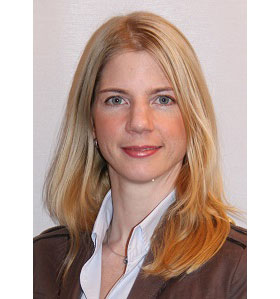Researchers Target Source of Racial Disparity in Endometrial Cancer Outcomes
July 20, 2021
Ambitious Project Seeks Cause of Dramatically Higher Mortality Rate for African-American Women
Innovations in Obstetrics & Gynecology | Summer 2021
While racial disparity in endometrial cancer outcomes is well documented, researchers at University Hospitals want to find out why it exists.
 Stephanie Avril, MD
Stephanie Avril, MDAfrican American women and white women have similar incidence rates of this cancer, yet the mortality rate is twice as high in African American women, according to Stefanie Avril, MD, pathologist at University Hospitals Cleveland Medical Center. The disparity persists even when taking established risk factors into account.
“This suggests that there are additional factors contributing to this outcome disparity that we don’t know or understand today,” Dr. Avril says. “That is exactly what we are trying to address with our research.”
African American women are less likely to receive guideline-driven testing for and treatment of endometrial cancer, and they tend to be diagnosed at a later stage and with higher grade tumors, says Jennifer Gordon, MD, PE, a Gynecologic Oncology Fellow at University Hospitals Cleveland Medical Center.
Together, Drs. Gordon and Avril are digging deeper to understand the driving factors behind this disparity. Their multidisciplinary research team also includes Case Western Reserve University faculty Jacqueline Curtis, PhD, and Fredrick Schumacher, PhD, both associate professors in the Department of Population and Quantitative Health Sciences.
“We talk about race as being a risk factor in oncology, but I think it may be more of a surrogate marker for unknowns than it is a risk factor in and of itself,” Dr. Gordon says. “The disparities may be letting us know we aren’t capturing all the relevant risks, and we need to look at something else.”
As they set out to conduct their research, the doctors expect there to be a complicated mix of multiple factors causing this pronounced disparity. “We think there is going to be a significant interplay of racism, poverty and neighborhood deprivation” Dr. Gordon says.
To understand how these factors connect — and how they can be possibly addressed to close that gap in outcomes — the team is developing a geographic information system (GIS) map. The researchers are looking at the residential addresses of about 4,000 women who have been diagnosed and treated through the University Hospitals Seidman Cancer Center. They are then adding layers of data like racial makeup, pollution levels, access to healthy food, crime rate, median income and school quality to begin seeing spatial relationships between biological, geographic and socio-demographic risk factors.
“It starts building a picture and understanding of the neighborhoods in which our patients are living, developing cancer, and experiencing their cancer diagnosis,” Dr. Gordon says.
Drs. Avril and Gordon also hope to get a better understanding of how environmental and social factors affect the microbiome in the female genital tract and the risk of endometrial cancer.
“Health behaviors, nutrition, exercise, chronic stress and environmental exposures can modify the microbiome,” Dr. Avril says. “The gut and genital microbiome are affected by these environmental and social factors. We are starting to have better and better evidence that the microbiome and these mucosal sites interact, which can in turn affect cancer development, progression and outcome.”
The team expects to have pilot data over the next six months to a year, but this project will be a multi-year effort. The doctors plan to leverage the preliminary data to launch larger-scale research. They want a more nuanced understanding of geographic and socio-demographic risk factors to translate to better patient care.
“By adding these additional layers of risk factors, we can deliver more individualized care in early detection and diagnosis and follow-up, ultimately leading to improvements in outcomes and closing this survival gap we are seeing,” Dr. Avril says.
As they continue their work, they will look to add more qualitative research. “We shouldn’t only think of personalized medicine as being the molecular and genetic differences in tumors or the patient,” Dr. Gordon says. “It is more holistic than that. It is also about taking into account the patient experience.”
The researchers have a pilot grant through University Hospitals. As their work progresses, they are eager to work with UH Seidman Cancer Center’s outreach group to connect with patients and translate their research into improved patient care.
If you are interested in learning more about the work to address disparities in endometrial cancer outcomes, reach out to Dr. Avril at Stefanie.Avril@uhhospitals.org and Dr. Gordon at Jennifer.Gordon@uhhospitals.org.
Contributing Experts:
Stefanie Avril, MD
Pathology
UH Cleveland Medical Center
Associate Professor of Pathology
Norma C. and Albert I. Geller Designated Professor in Ovarian Cancer Research
Case Western Reserve University School of Medicine
Jennifer Gordon, MD, PE
Gynecologic Oncology Fellow
UH Cleveland Medical Center


